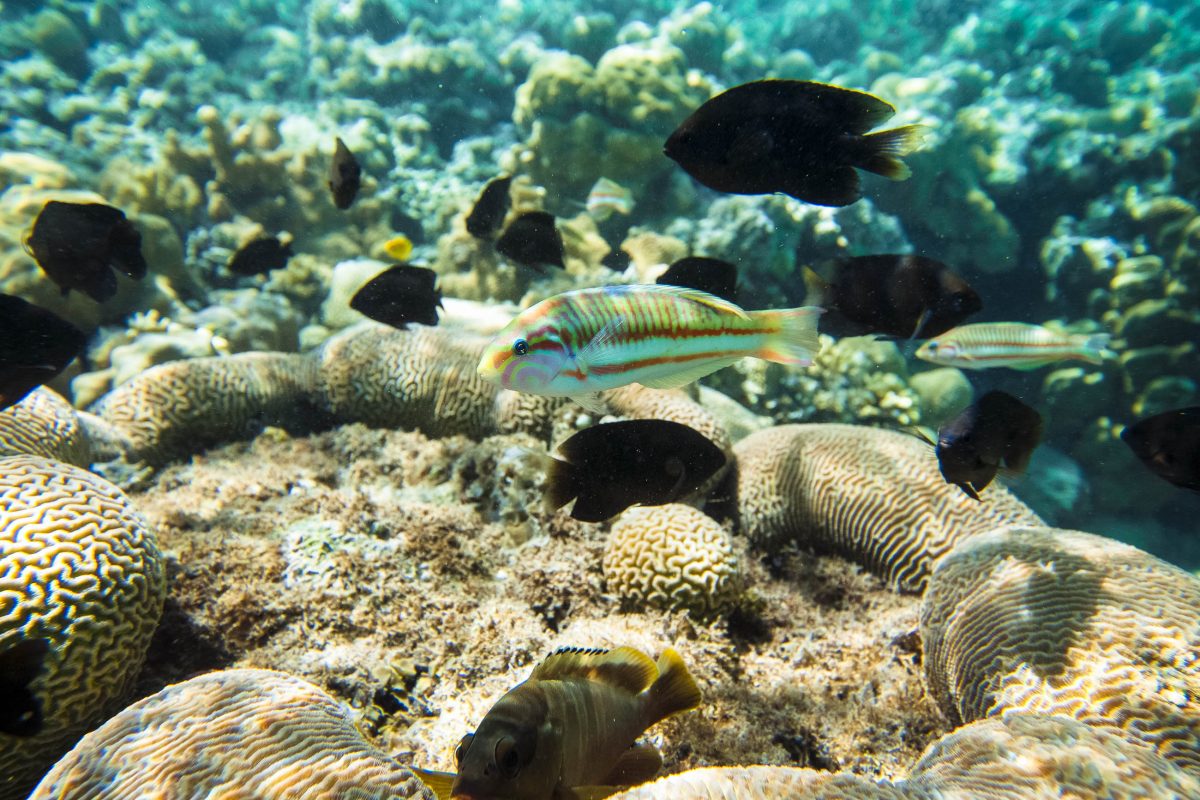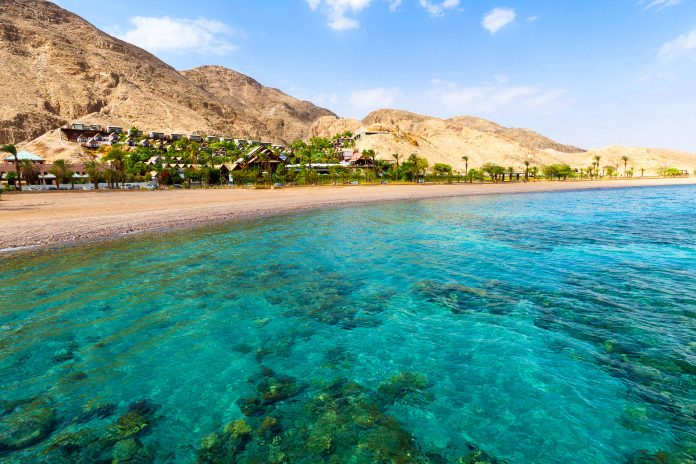Der Golf von Aqaba ist ein nördlicher Arm des Roten Meers und gehört zu den sensationellsten Tauchspots weltweit. Weiße Strände und Luxusresorts in der Stadt Aqaba locken Besucher aus der ganzen Welt in den Süden Jordaniens.
Der Golf von Aqaba liegt im Norden des Roten Meers und zählt zu unseren Top 10 Sehenswürdigkeiten von Jordanien. Gemeinsam mit dem Suez-Kanal umfasst er die südliche Spitze der Halbinsel Sinai und ist Jordaniens einziger Zugang zum Meer. Seine Küste wird von vier Ländern begrenzt: Jordanien, Israel, Ägypten und Saudi-Arabien.
Vor allem Ägypten nutzte den Golf von Aqaba, seit der Vierten Dynastie überquerten die Ägypter das Rote Meer um Handel zu treiben, darunter auch einmal Pharaonin Hatschepsut. Auch heute noch gilt der Golf von Aqaba als Verbindung zwischen Europa, Asien und Afrika als wichtiger Handelsweg.
Der Golf von Aqaba spielte in mehreren kriegerischen Auseinandersetzungen, wie dem Ersten Weltkrieg und dem Iran-Irak-Krieg eine bedeutende Rolle entweder als Meerzugang z.B. für den Irak über Jordanien oder Blockade für feindliche Truppen.
Inhaltsverzeichnis
Zahlen, Daten und Fakten zum Golf von Aqaba
Der Golf von Aqaba ist beinahe 200 Kilometer lang, an seiner breitesten Stelle knapp 30 Kilometer breit und erreicht eine unglaubliche Tiefe von fast 2.000 Metern (zum Vergleich: der Suezkanal ist nur etwa 100m tief).
Geformt durch Afrikas Großen Grabenbruch, der sich von Afrika bis zum Toten Meer hinaufzieht, weist der Golf von Aqaba noch in einer Tiefe von 1.000 Metern eine unglaubliche Temperatur von 21°C auf, wo andere Meere nur noch einige Grad „warm“ sind. Die Wärme des Golfs von Aqaba stammt nämlich nicht vom Sonnenlicht, sondern direkt aus dem Erdkern, auf seinem Grund wurden bereits Temperaturen von bis zu 60°C gemessen.
Strände und Riffe am Golf von Aqaba

Die größte Stadt an seinem Ufer ist die gleichnamige Stadt Aqaba, die zu Jordanien gehört und unter dem historischen Namen Ayla bereits den Nabatäern als Handelszentrum diente. Überreste der Zivilisation aus der Eisenzeit können heute noch besichtigt werden. Andere größere Ansiedlungen sind Eilat in Israel und Taba sowie die Touristenhochburg Sharm el-Sheikh in Ägypten.
Zwischen Eilat und Aqaba wurde 1996 ein Abkommen unterzeichnet, welches die Zusammenarbeite der beiden Städte bzgl. Tourismus, Umwelt, Landverwaltung, Energie- und natürliche Ressourcen, sowie die Bewerbung und Veranstaltung von Musik- und Sport-Events. Im Zuge dessen entstand auch der Red Sea Marina Peace Park.
Der Golf von Aqaba verfügt über traumhafte weiße Strände und eine spektakuläre Unterwasserwelt und ist daher ein attraktiver Touristenmagnet. Das Klima ist ganzjährig äußerst angenehm, die großen Städte Aqaba, Eilat und Taba verfügen alle über Luxusresorts am Strand.
Taucherparadies vor der Küste des Golfs von Aqaba
Eine der wichtigsten Einnahmequellen im Tourismus sind dabei Tauchtouren im Roten Meer. Das sensationelle Taucherparadies vor der Küste des Golfs von Aqaba ist das nördlichste Korallenriff weltweit und gehört zu den atemberaubendsten der Welt.
Die riesigen Korallenriffe und Schwärme an farbenprächtigen Fischen im glasklaren Wasser werden noch durch alte Wracks ergänzt, die teilweise sogar extra versenkt wurden, um der Meereswelt Unterschlupf zu bieten.
So durchstreifen zum Beispiel riesenhafte Walhaie, majestätische Hammerhaie und bizarr anzusehende Kugelfische das Meer um den Golf von Aqaba. Wer den Kopf lieber über Wasser hält, die prachtvolle Unterwasserwelt aber trotzdem nicht missen möchte, kann sie auch trockenen Fußes in einem Glasbodenboot entdecken.





